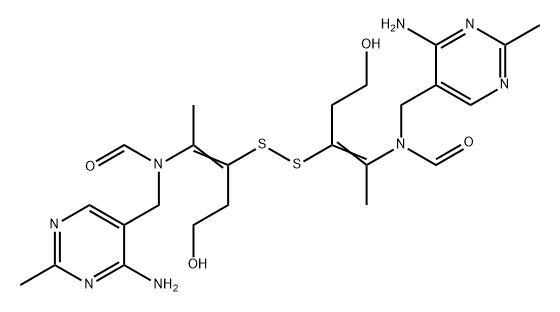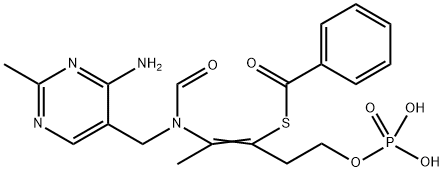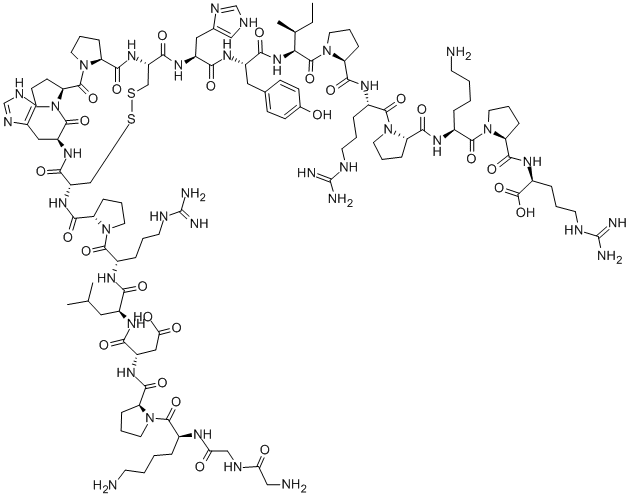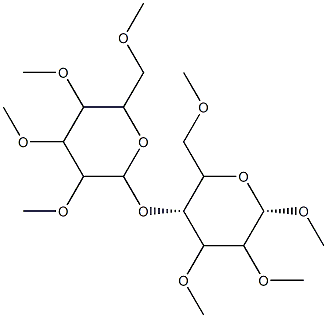Thiamine disulfide
- CAS NO.:67-16-3
- Empirical Formula: C24H34N8O4S2
- Molecular Weight: 562.71
- MDL number: MFCD00010427
- EINECS: 200-644-4
- SAFETY DATA SHEET (SDS)
- Update Date: 2025-12-27 15:38:00

What is Thiamine disulfide?
Chemical properties
White Solid
Originator
Arcalion,Servier,France,1974
The Uses of Thiamine disulfide
Thiamine disulfide is an antioxidant, inhibiting lipid peroxidation in rat liver microsomes and free radical oxidation of oleic acid in vitro. Thiamine disulfide has been explored as a potent inhibitor of HIV-1.
The Uses of Thiamine disulfide
Thiamine is a essential nutrient required for carbohydrate metabolism; also involved in nerve function. Biosynthesized by microorganisms and plants. Dietary sources include whole grains, meat products , vegetables, milk, legumes and fruit. Also present in rice husks and yeast. Converted in vivo to Thiamine diphosphate, a coenzyme in the decarboxylation of α-keto acids. Chronic deficiency may lead t o neurological impairment, bariberi, Wernicke-Korsakoff syndrome.
Definition
ChEBI: Thiamine disulfide is an aminopyrimidine, a homoallylic alcohol, a member of formamides and an organic disulfide.
Manufacturing Process
20 parts by weight of thiamin are dissolved in 25 parts of water, a cold
solution of 5 parts by weight of caustic soda in 25 parts of water added and
the mixture oxidized with a solution of 2.4 parts by weight of caustic soda and
20 parts by weight of potassium ferric cyanide in 80 parts of water while
stirring in the cold. The liquid is then evaporated to dryness and the resulting
oxidation product extracted with warm butyl alcohol.
The butyl-alcoholic solution is evaporated in vacuo and the residue dissolved
with gentle heating in 25 parts by volume of methyl alcohol. 100 parts by
volume of acetone are added, the solution filtered and further quantities of
acetone added, whereupon crystallization sets in. Yield: 12.2 parts by weight
of the pure product, having the melting point 177° to 179°C.
Therapeutic Function
Enzyme cofactor vitamin
Properties of Thiamine disulfide
| Melting point: | 177° with intense yellow coloration |
| Boiling point: | 886.1±65.0 °C(Predicted) |
| Density | 1.1966 (rough estimate) |
| refractive index | 1.7400 (estimate) |
| storage temp. | Refrigerator |
| solubility | DMSO (Slightly), Methanol (Slightly) |
| form | Solid |
| pka | 14.10±0.10(Predicted) |
| color | White |
| Merck | 14,9297 |
| CAS DataBase Reference | 67-16-3(CAS DataBase Reference) |
| EPA Substance Registry System | Formamide, N,N'-[dithiobis[2-(2-hydroxyethyl)-1-methyl-2,1-ethenediyl]]bis[N-[(4-amino-2-methyl-5-pyrimidinyl)methyl]- (67-16-3) |
Safety information for Thiamine disulfide
| Signal word | Warning |
| Pictogram(s) |
 Exclamation Mark Irritant GHS07 |
| GHS Hazard Statements |
H302:Acute toxicity,oral H315:Skin corrosion/irritation H319:Serious eye damage/eye irritation H332:Acute toxicity,inhalation H335:Specific target organ toxicity, single exposure;Respiratory tract irritation |
| Precautionary Statement Codes |
P261:Avoid breathing dust/fume/gas/mist/vapours/spray. P280:Wear protective gloves/protective clothing/eye protection/face protection. P305+P351+P338:IF IN EYES: Rinse cautiously with water for several minutes. Remove contact lenses, if present and easy to do. Continuerinsing. |
Computed Descriptors for Thiamine disulfide
New Products
4,4-Difluoropiperidine hydrochloride tert-butyl 9-methoxy-3-azaspiro[5.5]undecane-3-carboxylate Indole Methyl Resin N-Isopropylurea N,N-Dicyclohexylcarbodiimide(DCC) MELDRUMS ACID 5-METHYLISOXAZOLE-4-CARBOXYLIC ACID Magnessium Bis glycinate Zinc ascorbate 1-bromo-2-butyne 2-acetamidophenol 9(10H)-anthracenone Erythrosin B, 4-Piperidinopiperidine 2-((4-morpholinophenylamino) (methylthio) methylene) malononitrile 2,4-dihydroxybenzaldehyde 3-(4-morpholinophenylamino)-5-amino-1H-pyrazole-4-carbonitrile Methyl 2-methylquinoline-6-carboxylate 2,6-dichloro-4-nitropyridine 4-Bromo-2-chlorobenzonitrile 2-(benzylamino)acetic acid hydrochloride 4-(tert-Butoxycarbonylamino)but- 2-ynoic acid 3,4-dihydro-2H-benzo[b][1,4]dioxepine 1-Phenyl-1-cycloprppanecarboxylicacidRelated products of tetrahydrofuran








You may like
-
 Thiamine disulfide 95% CAS 67-16-3View Details
Thiamine disulfide 95% CAS 67-16-3View Details
67-16-3 -
 Thiamine disulfide hydrate 95% CAS 67-16-3View Details
Thiamine disulfide hydrate 95% CAS 67-16-3View Details
67-16-3 -
 Thiamine Disulfide CAS 67-16-3View Details
Thiamine Disulfide CAS 67-16-3View Details
67-16-3 -
 Thiamine disulfide 98% (HPLC) CAS 67-16-3View Details
Thiamine disulfide 98% (HPLC) CAS 67-16-3View Details
67-16-3 -
 Thiamine Disulfide CAS 67-16-3View Details
Thiamine Disulfide CAS 67-16-3View Details
67-16-3 -
 20677-73-0 (2,2-diethoxyethyl)methylamine 98%View Details
20677-73-0 (2,2-diethoxyethyl)methylamine 98%View Details
20677-73-0 -
 3-(4-(hydroxyamino)-1-oxoisoindolin-2-yl)piperidine-2,6-dione 98%View Details
3-(4-(hydroxyamino)-1-oxoisoindolin-2-yl)piperidine-2,6-dione 98%View Details -
 57381-49-4 2-bromo-4-chlorobenzonitrile 98%View Details
57381-49-4 2-bromo-4-chlorobenzonitrile 98%View Details
57381-49-4
